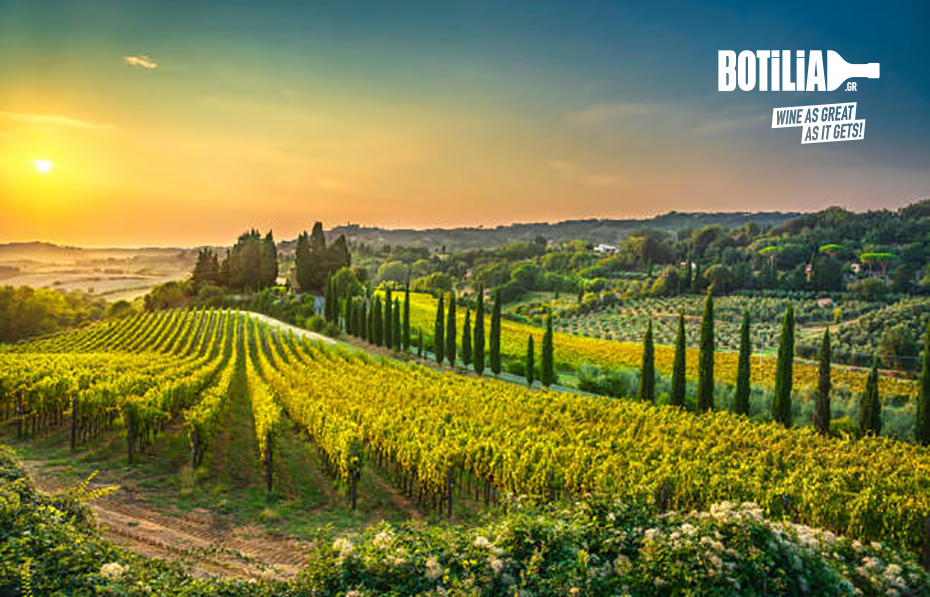5 WHITE VARIETIES YOU MAY NOT HAVE HEARD OF - AND YOU SHOULD!

Read here about 5 white varieties, Greek and non-Greek, that probably haven't made your acquaintance but definitely deserve your attention.
Furmint
If you have heard one thing that links wine with Hungary, then it is definitely the divine masterpieces of the Tokaj region in the north-east of the country, sweet wines produced with the effect of noble rot. (put a Tokaji Aszú 5 Puttonyos next to a piece of good stilton and you'll see what heaven looks like!)
The main variety in the production of this nectar is the native Furmint. (you will also find it in Austria, where it is called Mosler)
Thin skinned and sensitive variety - that's why the botrytis also loves it - it also gives wonderful dry wines. So, in a dry Furmint , such as Dongo Furmint 2016 - Mad Wines we will find a beautiful golden color, accentuated acidity, medium to full body and an aromatic palette that captivates you: stone fruit, pears and lime, minerality, smoke and a few spices at the end of the wines that have matured in barrels.
The best of these can also be aged for a long time, giving even richer results.
Godello
Another rare variety, this time from northwestern Spain, from the region of Galicia.
On the nose, Godello has something enticing, with aromas reminiscent of a good Chardonnay. Notes of green apple, pear and citrus fruits, white flowers and fresh herbs. Add a bit of vanilla or toast to them, especially when matured in oak barrels. Kind of like a well-made Burgundy. Taste a Ultreia Godello 2019 - Bodegas Raul Perez.
In the mouth the wine has a medium body and a silky, almost creamy texture, which again can remind one of an elegant Chardonnay. Its acidity ranges from medium to high, providing a refreshing counterpoint to its substantial body. And while we are talking about a purely dry wine, the aromas can hint at a sweetness, which gives a balance and elegance that Chardonnay lovers, especially from Burgundy, will appreciate.
Its crisp acidity and lime aromas will pair well with light proteins such as shrimp or grilled fish.
Pecorino
You read it and surely your mind went to the wonderful Italian sheep cheese. But here we are talking about wine and in this case about this rare variety of central-eastern Italy, see Marche and Abruzzo.
So our "little sheep" - pecorino in Italian means little sheep - is a thin-skinned grape that gives wines with high acidity while at the same time it can "raise" high sugars. Which means that it can also give a quite high alcohol content which is however balanced by its beautiful acidity. A typical sample of Pecorino such us Pecorino d’Abruzzo 2021 - Azienda Agricola Cirelli , is therefore dry, with a straw-yellow color, it distinguishes the very fresh bouquet of acacia flowers and jasmine, but also fresh and ripe citrus fruits, possibly stone fruits, all with a subtle sense of oiliness.
One version says that the grape got its name because it was a favorite delicacy - because of its sweetness - of the sheep that grazed in the plains of the region.
Asprouda of Serres
After the trips to Hungary, Spain and Italy, we come back within the country’s borders and go north to Serres. Here we have a variety that has been completely identified with a winery and a person. Asprouda was rescued by the Nerantzi Estate and identified in 1998 as a local variety of Serres.
In a flat landscape, next to the river Strymonas, the estate's vineyard produces a wine with a medium golden color and a nose restrained at first, which unfolds as time passes. Overripe citrus fruits - orange, kumquat and candied orange peel - make excellent company with basil, spices and minerality, while a light oxidation at the back reminds something of "natural" vinification.
In the mouth, we have medium to full body, high concentration and an oily texture that wins you over! The latter balances with the medium+ acidity while the bouquet gives ripe peaches and citrus fruits, honeysuckle and herbs. The six-month stay in oak barrels has given the necessary touch of vanilla, toasted bread and a little white pepper, while the long aftertaste is dominated by a sensation of honey. Drink Asprouda of Serres 2021 now but be patient, in 3-5 years it will have blossomed even more!
Sklava
Going further south, we find a very old white variety whose origins go back to the 12th-13th century. It is famous for its tough character, its great adaptability to dry soils and difficult climates. In the past, vines of this variety were found in various places of old vineyards between Agiorgitiko.
It ripens around the end of August-beginning of September, but it was usually left to be harvested together with Agiorgitiko, about 15 days later.
Its rescue is largely due to the efforts of the agriculturist Ilias Zacharias, who dedicated 15 acres to this variety at his namesake estate. In its single varietal expression from the Estate, we get a wine with a light lemon color with greenish highlights. Rich nose dominated by citrus blossoms, pears, apples and some tea in the background.
In the mouth it has a medium body, a slight oiliness, offset by a medium but robust acidity and a long finish dominated by tea leaves.
Pair a Sklava 2022 with salads, pasta with light sauces, chicken, pies and savory tarts and you will see it giving you its best.
Fondas Dialeismas
Sommelier
Co-owner of Margiora


